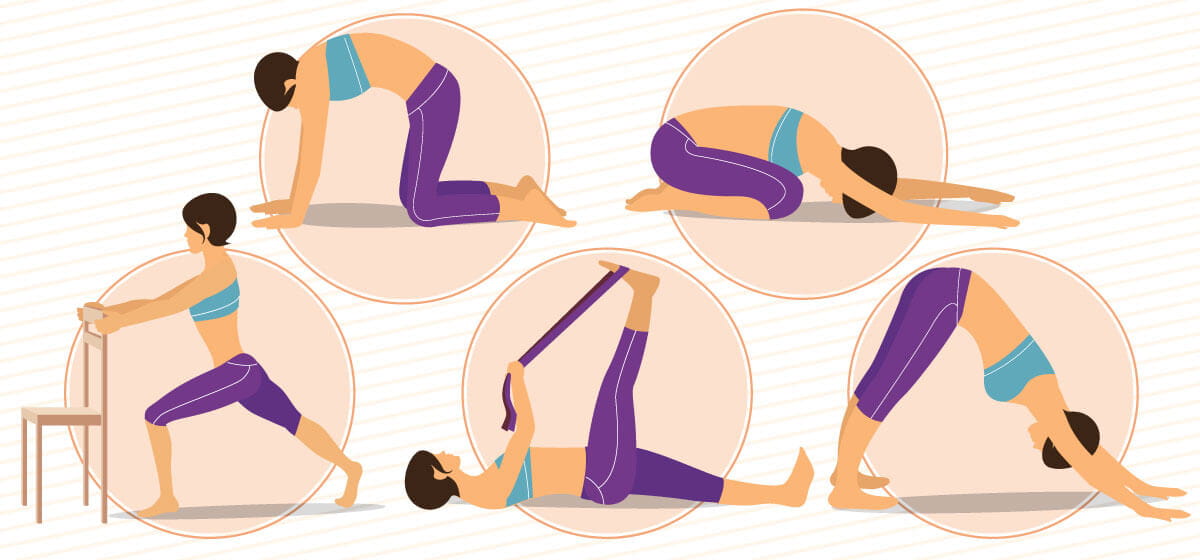How to Improve Your Posture

Was your mom always bugging you to improve your posture and stand up straight? Turns out that yet again, she was right. Good posture is a cornerstone of both physical and mental health.
“How you carry yourself affects everything,” says Tony Bohannon, director of outpatient rehab at Baptist Health Paducah Rehabilitation. “The whole body is balanced to be able to carry the weight of the head, and for the shoulders and the hips to be able to move properly.”
To assess your standing posture, have a friend take your photo:
- Your earlobes should be over the shoulders, which should be pulled back to open your chest (you may feel like you’re sticking it out).
- Shoulders should rest directly above hips, and your pelvis should be in neutral — so don’t tuck it under like Michael Jackson mid-concert, and don’t stick your bottom out behind you, either.
- Your spine should be straight, other than the slight, natural curve in your lower back.
Got it? Great. Here’s why trying to keep that proper posture is so important.
Benefits of Good Posture
You’ll hurt less if you have good posture.
Bohannon says that “forward-head posture,” which is basically sticking your neck out (and what many of us do as we squint down at our smartphones), can make you feel miserable in the long run because the shoulders are forced to work harder. “For every inch that your head goes forward, it adds 10 pounds of compression onto your neck,” Bohannon says. Along with back and neck pain, headaches (including migraines) can be caused by pain from the upper neck joints, pinched nerves or trigger points at the base of the skull.
You’ll protect your spine and avoid surgery with better posture.
Over time, certain discs must work harder to compensate for limited mobility in other areas. “As the discs degenerate, they squish down, so that’s where you can start closing off the holes where the nerves come out,” Bohannon says. As a result, common problems can include pinched nerves, compressed joints, and even spinal arthritis.
Breathing and eating will be easier if you fix your posture.
“Breathing tends to be better when you have correct posture because you have room for your ribs to expand. And as breathing increases blood flow through the abdomen, it can help with digestion,” Bohannon says.
You might be happier with proper posture.
Several studies have also linked straighter posture to improved mood. In a 2015 study, researchers asked some participants to slouch and others to sit up straight. After monitoring mood, heart rate and blood pressure, the authors concluded that sitting up straight “can maintain self-esteem, reduce negative mood, and increase positive mood compared to a slumped posture,” and that “[it] may be a simple behavioral strategy to help build resilience to stress.”
You’ll look leaner with good posture.
Slouching compresses your torso, making you look shorter and adding rolls to your abdomen — who wants that?
How to Fix Your Posture
“Not everything has to be a gym membership or a 45-minute yoga class,” says Bohannon, who adds, “Just a little bit of flexibility here and there can be enough to relieve pressure on joints and nerves and make you feel better and be less prone to injury.” Here are a few suggestions to avoid the negative effects of bad posture.
Move regularly.
Set a timer or a pop-up reminder on your phone to encourage you to get up every 15 to 30 minutes and walk around, even if it’s just for a minute or two. Challenge yourself to stand two inches taller — imagine two strings on your body, one drawing the crown of your head higher and the other pulling your chest forward.
Posture exercises.
Incorporate a few stretches and exercises to improve posture into your movement breaks, such as child’s pose or downward dog stretch. Got time? Try a 15-minute beginner’s yoga video on YouTube. “It ends up stretching things that you don’t even realize are tight. You feel so much better when you’re loose because you just don’t have to work as hard,” Bohannon says.
Limit screen time.
Whether you’re a kid hooked on “Angry Birds” or an adult who loves Instagram, spending too much time hunched over a device can lead to hyperkyphosis, or the rounding of the mid-back. “Someone can get so stiff and stooped forward that they can’t sit up properly, and no matter how strong they are, we have to work on flexibility first,” Bohannon says.
Lose weight.
Bohannon says that dropping pounds isn’t a must for everyone, but for someone who is both overweight and prone to postural strain, “losing the weight can help take some of that strain off,” he says.
Make it a habit.
Bohannon stresses that there are no quick fixes — focusing on posture must become a daily practice. To keep yourself accountable, he suggests recruiting co-workers and family members to remind you to straighten up and stretch more. “My goal for patients is to have them internalize posture so it becomes the new normal, and slouching starts to feel awkward and heavy.”
Learn more about how what Baptist Health Orthopedic and Sports Medicine services can help you correct your posture.



